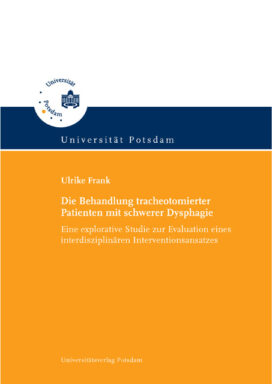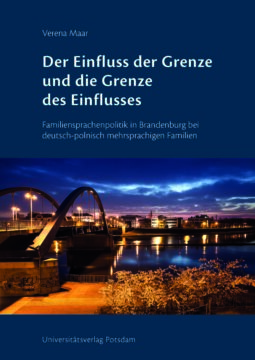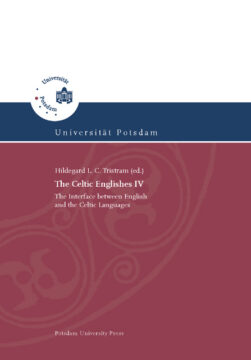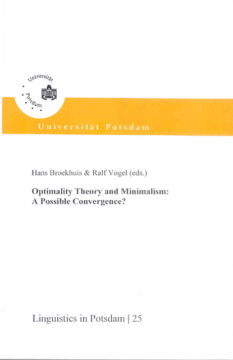In neurological rehabilitation there is a growing need for information about treatment of tracheotomized dysphagic individuals and treatment methods have to be evaluated objectively. This dissertation presents a multidisciplinary approach for the treatment of tracheotomized dysphagic patients that was developed based on research findings and clinical experiences. Furthermore it presents a first approach to a systematic evaluation of a multidisciplinary treatment protocol and explorative data about the rehabilitative progress in this patient group. In a retrospective analysis mean cannulation times and the success rate of decannulation from patients were compared before and after introduction of the multidisciplinary procedure in a rehabilitation centre, REHAB Basel, Switzerland. Furthermore, the rehabilitation progress was analyzed by means of the assessment tools ‘Functional Independence Measure (FIM)’ and ‘Early Functional Abilities (EFA)’. Decannulation rates and success of decannulation were comparable in both groups of patients. With regard to mean cannulation times, however, a significant reduction was found in the group who underwent multidisciplinary treatment. This indicates a higher efficiency of the multidisciplinary approach, whereas, with regard to effectiveness, the two approaches seem to be comparable. After decannulation the patients of the multidisciplinary group showed clear functional improvements in performing activities of daily living. Most of these patients were able to return to full oral nutrition after decannulation. The multidisciplinary approach was found to be more efficient than the former intradisciplinary protocol as it led to a safe but faster decannulation of tracheotomized dysphagic patients. The explorative data concerning rehabilitation progress in these patients supports the importance of the development of evidence-based treatment protocols that lead to a fast and safe decannulation. This can be considered the basis for further significant improvement of the functional independence of the tracheotomized dysphagic patient.
Eine explorative Studie zur Evaluation eines interdisziplinären Interventionsansatzes
ISBN: 978-3-940793-55-3
232 pages
Release year 2008
9,50 €
Non-taxable transaction according to § 1 (1) UStG/VAT Act in combination with § 2 (3) UStG/VAT Act a. F. Providing this service, the University of Potsdam does not constitute a Betrieb gewerblicher Art/Commercial Institution according to § 1 (1) No. 6 or § 4 KStG/Corporate Tax Act. If the legal characterization of our business is changed to a commercial institution subsequently, we reserve the right to invoice VAT additionally. zzgl. Versandkosten
In neurological rehabilitation there is a growing need for information about treatment of tracheotomized dysphagic individuals and treatment methods have to be evaluated objectively. This dissertation presents a multidisciplinary approach for the treatment of tracheotomized dysphagic patients that was developed based on research findings and clinical experiences. Furthermore it presents a first approach to a systematic evaluation of a multidisciplinary treatment protocol and explorative data about the rehabilitative progress in this patient group. In a retrospective analysis mean cannulation times and the success rate of decannulation from patients were compared before and after introduction of the multidisciplinary procedure in a rehabilitation centre, REHAB Basel, Switzerland. Furthermore, the rehabilitation progress was analyzed by means of the assessment tools ‘Functional Independence Measure (FIM)’ and ‘Early Functional Abilities (EFA)’. Decannulation rates and success of decannulation were comparable in both groups of patients. With regard to mean cannulation times, however, a significant reduction was found in the group who underwent multidisciplinary treatment. This indicates a higher efficiency of the multidisciplinary approach, whereas, with regard to effectiveness, the two approaches seem to be comparable. After decannulation the patients of the multidisciplinary group showed clear functional improvements in performing activities of daily living. Most of these patients were able to return to full oral nutrition after decannulation. The multidisciplinary approach was found to be more efficient than the former intradisciplinary protocol as it led to a safe but faster decannulation of tracheotomized dysphagic patients. The explorative data concerning rehabilitation progress in these patients supports the importance of the development of evidence-based treatment protocols that lead to a fast and safe decannulation. This can be considered the basis for further significant improvement of the functional independence of the tracheotomized dysphagic patient.
Recommended Books
-
 2024
2024Der Einfluss der Grenze und die Grenze des Einflusses
22,50 €Non-taxable transaction according to § 1 (1) UStG/VAT Act in combination with § 2 (3) UStG/VAT Act a. F. Providing this service, the University of Potsdam does not constitute a Betrieb gewerblicher Art/Commercial Institution according to § 1 (1) No. 6 or § 4 KStG/Corporate Tax Act. If the legal characterization of our business is changed to a commercial institution subsequently, we reserve the right to invoice VAT additionally.
zzgl. Versandkosten
Add to cart -
 2006
2006The Celtic Englishes IV
18,00 €Non-taxable transaction according to § 1 (1) UStG/VAT Act in combination with § 2 (3) UStG/VAT Act a. F. Providing this service, the University of Potsdam does not constitute a Betrieb gewerblicher Art/Commercial Institution according to § 1 (1) No. 6 or § 4 KStG/Corporate Tax Act. If the legal characterization of our business is changed to a commercial institution subsequently, we reserve the right to invoice VAT additionally.
zzgl. Versandkosten
Add to cart -
 2007
2007Phonology Limited
9,00 €Non-taxable transaction according to § 1 (1) UStG/VAT Act in combination with § 2 (3) UStG/VAT Act a. F. Providing this service, the University of Potsdam does not constitute a Betrieb gewerblicher Art/Commercial Institution according to § 1 (1) No. 6 or § 4 KStG/Corporate Tax Act. If the legal characterization of our business is changed to a commercial institution subsequently, we reserve the right to invoice VAT additionally.
zzgl. Versandkosten
Add to cart -
 2006
2006Ralf Vogel, Hans Broekhuis, Eva Engels, Jane Grimshaw, Vieri Samek-Lodovici, Alona Soschen, Pius ten Hacken, Sten Vikner
Optimality theory and minimalism
9,00 €Non-taxable transaction according to § 1 (1) UStG/VAT Act in combination with § 2 (3) UStG/VAT Act a. F. Providing this service, the University of Potsdam does not constitute a Betrieb gewerblicher Art/Commercial Institution according to § 1 (1) No. 6 or § 4 KStG/Corporate Tax Act. If the legal characterization of our business is changed to a commercial institution subsequently, we reserve the right to invoice VAT additionally.
zzgl. Versandkosten
Add to cart
Publisher Info
Contact
Potsdam University Library
University Press
Am Neuen Palais 10
14476 Potsdam
Germany
verlag@uni-potsdam.de
0331 977-2094
0331 977-2292





